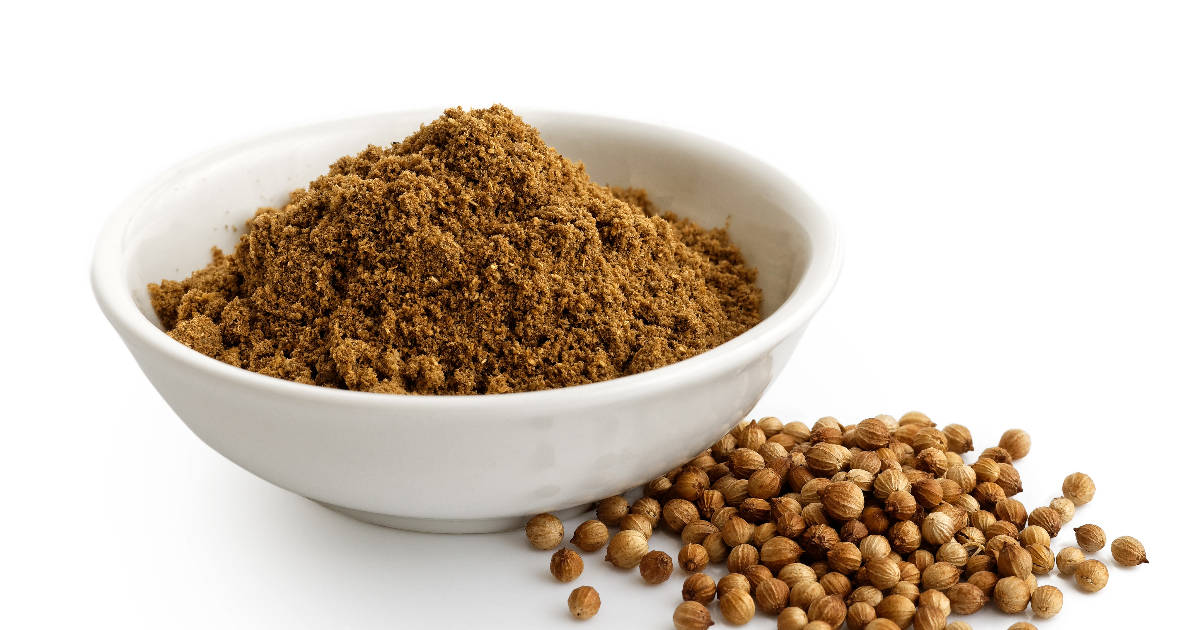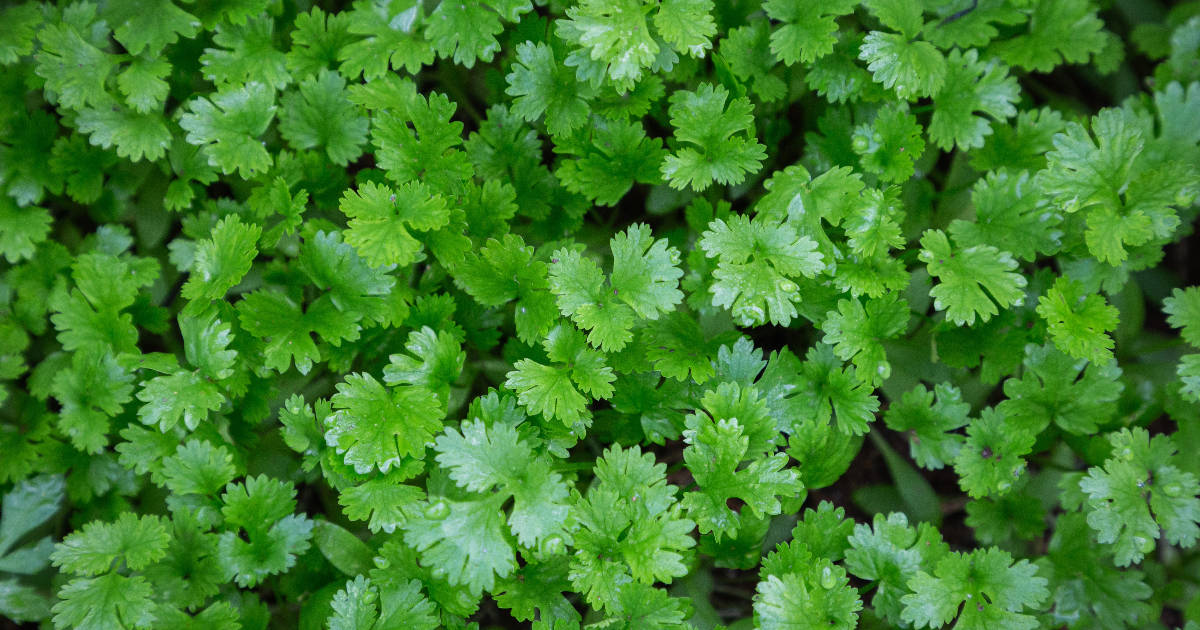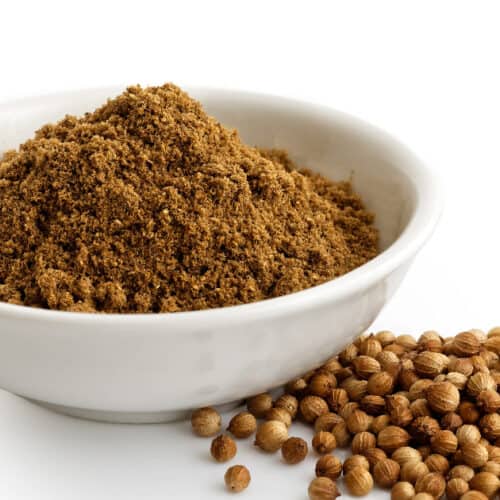Coriander powder, also known as dhaniya powder or ground coriander, is an essential ingredient in many cuisines around the world. This flavorful spice adds a warm, earthy aroma and citrusy flavor to dishes. Making your own homemade coriander powder is easy and rewards you with a brighter, fresher spice compared to store-bought powder.

Read on to learn everything about coriander powder - from what it is and its uses to how to select, dry, roast, grind, and store it for maximum freshness and flavor. With just coriander seeds and a few pieces of equipment, you can have homemade ground coriander ready in less than 30 minutes.
What is Coriander?

Coriander refers to the edible seeds produced by the coriander plant, which is also known as cilantro or Chinese parsley. The plant's leaves are called cilantro while the dried seeds are called coriander.
The seeds are small and round. They can be yellowish-brown or light brown in color. When fresh, coriander seeds have a sweet, aromatic flavor profile with citrus undertones.
Coriander seeds have been used in cooking for thousands of years. Today, ground coriander is a staple ingredient in many global cuisines from Indian and Latin American to Thai and Mediterranean.
What is Coriander Powder?
Coriander powder is made by dry roasting and then grinding coriander seeds into a fine powder. It has an intense, earthy taste and lemon/lime aroma. The flavor of freshly ground coriander is brighter and more potent compared to pre-ground spice.
Coriander powder is called dhaniya powder in Hindi and cilantro en polvo in Spanish. It's one of the most essential spices used in curries, stir-fries, soups, and marinades. The powder can be used whole or blended into spice mixes like garam masala.
Both whole and ground coriander add unique flavor to recipes. While whole seeds are used for tempering or in pickling blends, the ground powder is stirred into dishes during cooking for its robust, warming taste.
Benefits of Coriander Powder
Coriander is an excellent source of minerals, antioxidants, and dietary fiber. Adding more of this aromatic spice to your diet provides the following benefits:
- Aids digestion - Contains insoluble fiber that promotes regularity and improves digestion. The essential oils stimulate the digestive system as well.
- Supports heart health - Packed with antioxidants that may lower LDL (bad) cholesterol and reduce the risk of heart disease.
- Anti-inflammatory - Phytonutrients like quercetin fight inflammation responsible for the disease.
- Anti-microbial - Coriander's oils contain compounds like linalool that combat harmful bacteria.
- Lowers blood sugar - This may improve insulin sensitivity and promote proper blood sugar regulation.
So your homemade coriander powder not only makes food taste amazing, but it also boosts your health in multiple ways!
| Type of Equipment | Purpose |
|---|---|
| Coffee grinder, spice grinder, or blender | Pulverizing the seeds into powder |
| Heavy skillet or pan | Dry roasting the seeds |
| Kitchen funnel | Easy transfer of powder to jar |
| Airtight glass jar | Storage |
How to Select Coriander Seeds
Quality seeds are needed to produce flavorful, aromatic coriander powder. Here's what to look for when buying coriander seeds:
- Vibrant color - Opt for seeds that are light brown or pale yellow, not dark brown.
- Aroma - Fresh seeds will have a strong lemony, floral scent when crushed.
- Whole shape - Choose seeds that are uniform in size and round shape, not shriveled.
- Production date - Check the expiry date and choose newer seeds over older stock.
- No moisture - Seeds should not feel moist or gummed together, a sign they are old.
Select organic seeds if possible for higher quality and purity. It's worth purchasing smaller amounts more frequently to ensure you have fresh coriander on hand.
Key Takeaway: Seek out yellowish-brown coriander seeds that are uniform in size, give off a strong citrus aroma and have recent production dates for best results.
How to Dry and Roast Coriander Seeds
| Step | Instructions |
|---|---|
| 1 | Rinse coriander seeds and pat dry |
| 2 | Dry roast in skillet 2-3 minutes |
| 3 | Allow seeds to cool completely |
| 4 | Grind seeds into powder |
| 5 | Transfer powder to airtight container |
Before grinding, it's important to dry roast the coriander seeds to intensify the flavor and make the grinding process easier. Here's a step-by-step guide:
Dry Seeds
Spread seeds in a single layer on a paper towel or tray. Let sit 1-2 days until completely dry and crisp. If you're pressed for time, dry in the oven at the lowest temp (150°F) for 20 minutes.
Roast Seeds
Heat a skillet over medium heat. Add seeds and roast for 2 minutes, stirring frequently, until fragrant and slightly darker. Be careful not to burn.
Cool Seeds
Immediately transfer seeds to a plate to halt cooking. Let cool completely, about 30 minutes. Seeds need to be at room temperature before grinding.
Dry roasting deepens the earthy notes in the coriander and evaporates any moisture from the seeds for better preservation.
How to Grind Coriander Seeds into Powder
Once seeds are roasted and cooled, grinding them into a fine or coarse powder is straightforward:
- Coffee grinder - Quickly pulverizes seeds into powder.
- Spice grinder - Designed for grinding spices into powder.
- Food processor/blender - Works in small batches if a grinder is not available.
- Mortar and pestle - Grinds seeds with some effort into medium coarse powder.
Add a few tablespoons of seeds to the grinder and pulse until it reaches the desired texture. Be careful not to over-grind into a paste. Store powder in an airtight container away from heat, light, and moisture.
How to Store Ground Coriander
Proper storage keeps coriander powder's essential oils intact and prevents flavor loss. Follow these tips:
- Use an airtight glass jar - Avoids air exposure and contains the aroma.
- Store in a cool, dark place - Heat and light degrade spices faster.
- Keep away from moisture - Prevent caking and spoilage from humidity.
- Use a clean, dry spoon - Moisture causes clumping when dispensing.
- Buy smaller amounts - Fresher spice vs. large batch sitting for months.
- Ideal shelf life is 3-6 months - Potency and flavor diminishes over time.
Follow the storage guidelines above and your homemade ground coriander will maintain excellent flavor and aroma for months!
How to Use Coriander Powder
Ground coriander is incredibly versatile. It adds warmth and citrus flavor to both savory dishes:
- Curries - Sprinkle into curries like dal, chicken tikka masala, or aloo gobi.
- Rice - Stir into flavored rice like coconut rice or cumin rice.
- Soups - Add an earthy aroma to lentil, bean, or vegetable soups.
- Marinades - Combine with garlic, spices, and oil to marinate meats.
- Roasted vegetables - Toss carrots, cauliflower, or potatoes with oil, coriander, and cumin.
- Pickling spice - Include in homemade pickling brines and chutneys.
Start with 1/4-1/2 teaspoon ground coriander per serving and adjust to taste. It combines well with cumin, turmeric, ginger, and garam masala.

Homemade Coriander Powder
Ingredients
- 1 cup coriander seeds
Instructions
Dry and Roast Seeds
- Rinse coriander seeds and pat dry thoroughly with a towel. Spread on a baking sheet in a single layer. Let air dry 1-2 days until very dry and crisp.
- Heat a skillet over medium heat. Add seeds and dry roast for 2-3 minutes, stirring frequently, until fragrant and slightly darker in color. Transfer immediately to a plate and let cool completely.
Grind Seeds
- Pour cooled, roasted seeds into a spice grinder, coffee grinder, or small blender. Grind in batches to a fine or coarse powder.
- Use a funnel to transfer ground coriander powder into an airtight container. Store in a cool, dark place and use within 3-6 months for best flavor.
Notes
FAQ
1. Do you have to roast coriander seeds before grinding?
Roasting is recommended to bring out the full flavor, but you can grind untoasted seeds too. The flavor will be lighter and fresher tasting.
2. Is ground coriander the same as ground cumin?
No, they come from different plants and have distinct flavors. Coriander is lemony while cumin is warm and earthy.
3. What's a good substitute for coriander powder?
You can substitute with ground caraway seeds, curry powder or a blend of cumin, fennel, and caraway seeds.
4. How long does homemade last?
Properly stored in an airtight container in a cool, dark place, it will last 3-6 months before losing potency.
5. What recipes use a lot of coriander powder?
Indian curries, braised meat dishes, lentil soups, vegetable stir fries, marinades, and chili all benefit from coriander powder.
Conclusion
Making super fresh coriander powder at home rewards you with more flavor and aroma compared to store-bought, along with health benefits.
With just a few simple steps - washing, drying, roasting grinding, and storing - you can have flavorful homemade ground coriander ready to enhance your cooking.
The next time a recipe calls for coriander powder, try grinding your own from whole seeds instead for the freshest spice possible.

